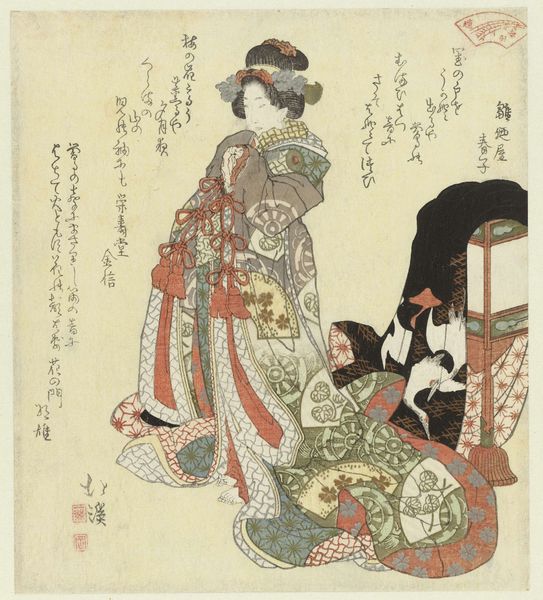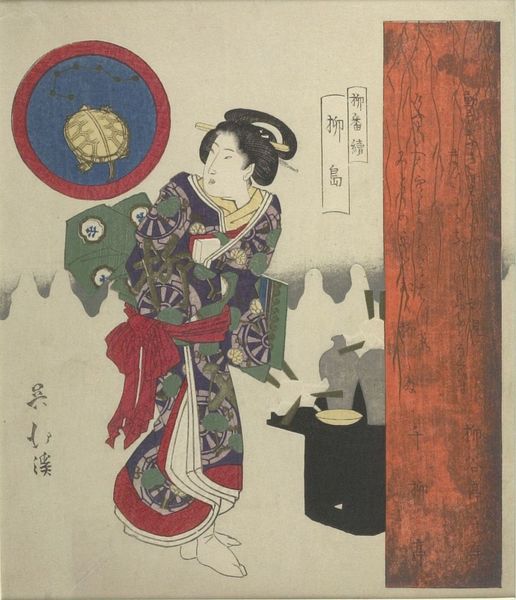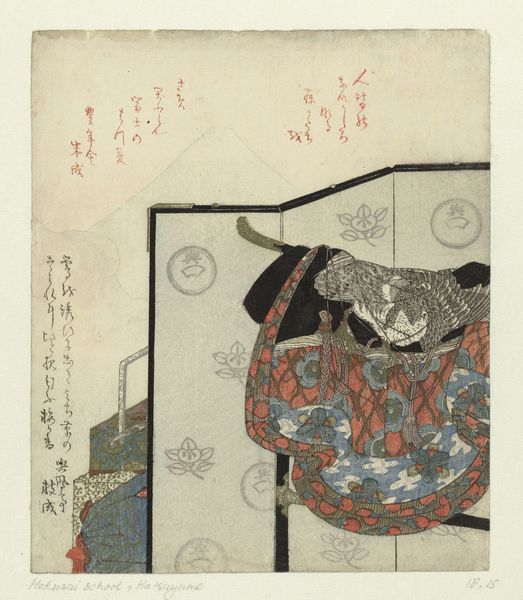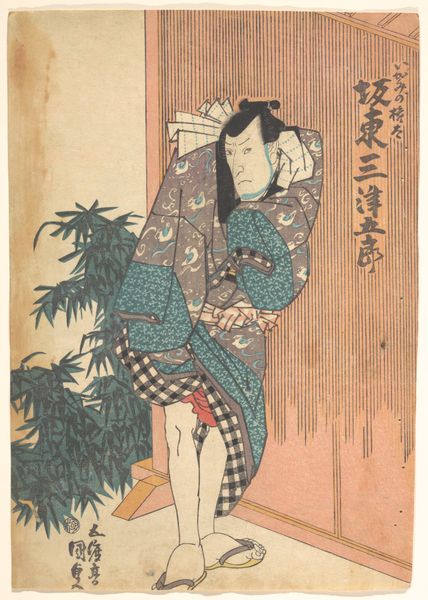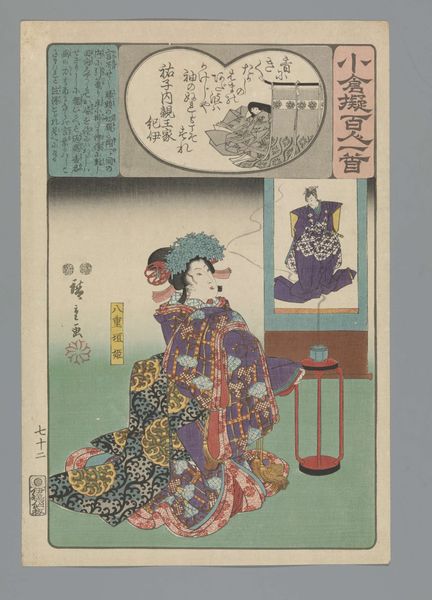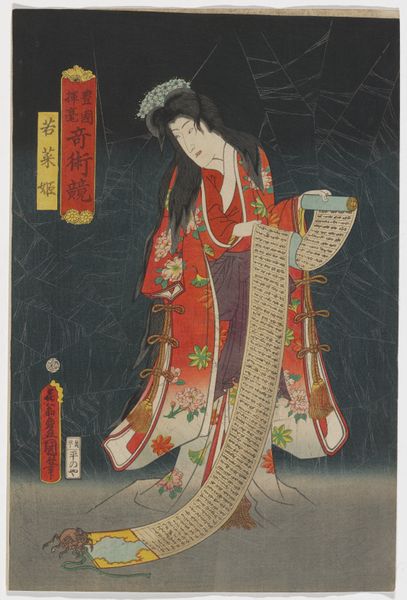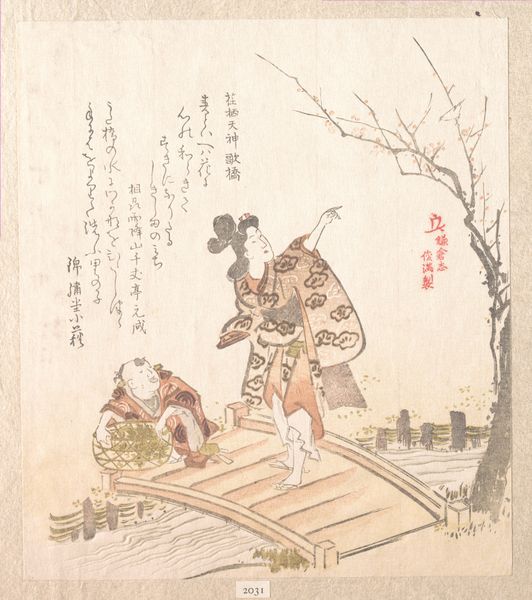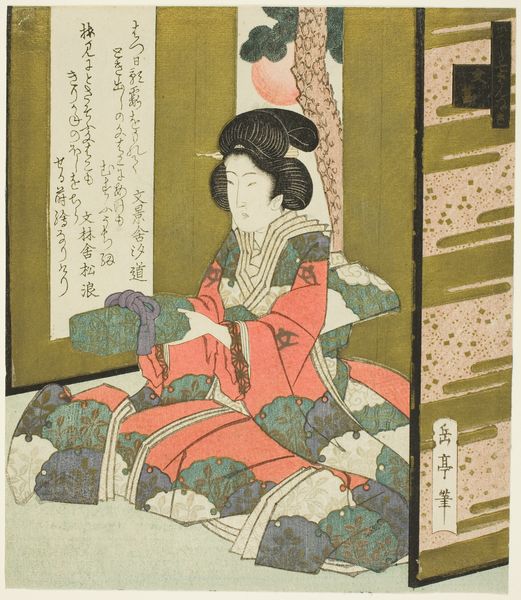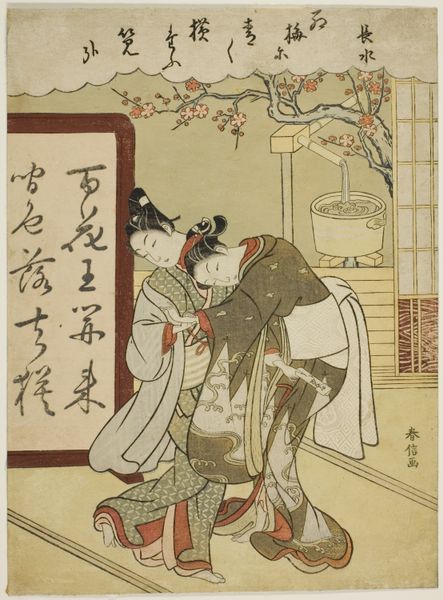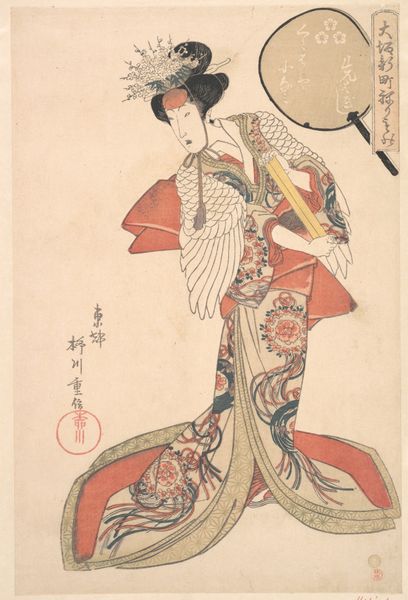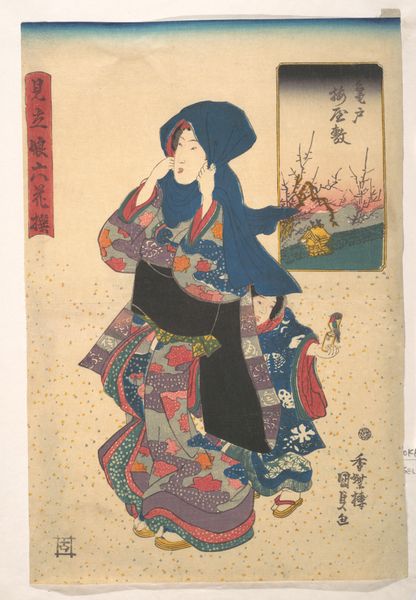
print, woodblock-print
#
portrait
#
narrative-art
# print
#
asian-art
#
ukiyo-e
#
figuration
#
woodblock-print
Dimensions: height 217 mm, width 184 mm
Copyright: Rijks Museum: Open Domain
Curator: Here we have "Paarden-schelp" by Katsushika Hokusai, created around 1822. It's a woodblock print now housed in the Rijksmuseum. Editor: The first impression is one of understated tension, isn’t it? A serene scene rendered in soft hues, yet something about the central figure's gesture seems burdened or introspective. Curator: Absolutely. Consider the context; this work originates from the Ukiyo-e tradition, flourishing in a period defined by strict social hierarchies and rising urban culture. The depicted figure, with the theatrical clothing and makeup, most likely belongs to the world of Kabuki theatre. The actor, through their character, allowed for an examination and subversion of those restrictive roles. Editor: That ties into the symbolism—these actors were key interpreters of emotional and moral ambiguities for a wide public audience. Looking at this image, it appears the character holds many tasselled cords. Is it a character representation or something else entirely? Curator: I believe the tassels denote his character's elevated status or ritualistic role within the play. Also, notice the brazier with the candle nearby – is it a spiritual element? Editor: Indeed. Light, as a guiding force, has long symbolized not only intellectual enlightenment, but moral truth as well. The brazier becomes a physical manifestation of that presence. Curator: Perhaps illuminating that moment of intense questioning and the responsibility inherent to his role. The inscription, unfortunately, I cannot quite decipher, but it may relate to a poem from a specific Kabuki play that can provide further context. Editor: Fascinating how Hokusai uses a print, something that allows widespread distribution, to reflect on elite artistic worlds. The tension underscores this paradox; he portrays an extremely exclusive artistic realm for mass consumption. It is a beautiful way to look into performativity, gender, and identity. Curator: Seeing how an image from the past speaks volumes about performativity still relevant today proves, once again, that these conversations on representation still impact us. Editor: Indeed. Each visual component adds depth to our understanding.
Comments
No comments
Be the first to comment and join the conversation on the ultimate creative platform.
